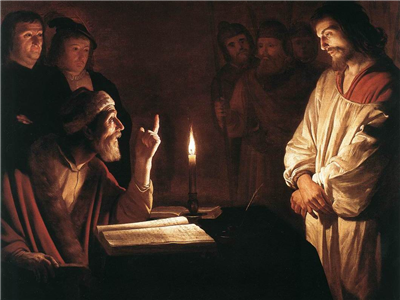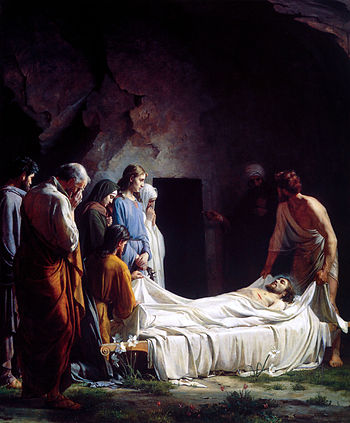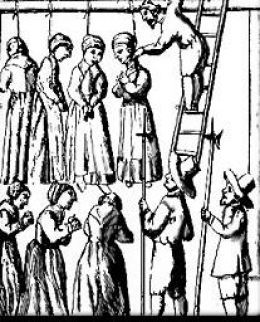On the AFA forum someone suggested I address the following 5 points often used to argue for Christianity originating with a historical Jesus.
how about addressing the main points of the evidence offered up by the historicists?
1. The Brother of The Lord
2. Born of a woman
3. Born in the line of David
4. Born of the flesh
5. Born as a Jew in Judea
In my previous post I copied my response to point #1.
That leaves four to go, #2-#5. But they bore me.
The reason debates about them bore me is that they do nothing either for or against the question of whether Jesus was a historical person. Look at them. No-one goes around saying, “Hey, I think you should hear what I’ve got to say about this incredible guy I’ve heard about. He was actually born of a woman, and reckons he can trace his family tree all the way back to Adam. How cool is that! And he was born flesh and blood even. And just to stick it to all you folks who worship Heracles and Asclepius he was a Jew in Palestine. But here’s the thing: he now lives in me and I die daily in him and he’s gonna come and take us all up to the sky very soon now.
Sorry, but that’s not how one normally talks about people — even omitting that last bit about “here’s the thing”.
Those claims, being born of a woman and in the flesh etc, are theological claims. They are made to stress certain theological doctrines. Presumably some rival theologians were saying he was not born flesh and blood. And it was a Jewish theology, so it was important to identify the guy with David and Israel.
Even the crucifixion is only ever mentioned as a theological datum. The crucifixion is only ever introduced to talk about salvation and freedom from the Jewish law. It is always and only ever raised as a theological fact and never addressed as a “historical event” with dates, who, how, why, witnesses, etc. (The only “why” is again theological, not historical: it is to show how much the Jews are all wrong about their religion.)
None of that “proves” the guy was a historical figure. All it proves is that someone had a bunch of theological ideas about a certain figure he only heard about from others and who he claimed “revealed himself” mystically “inside” him.
So that’s why I tend to tune out whenever discussions start up about whether or not any of those four points above (nos. 2 to 5) are “proofs” for the historical Jesus.
Not one of them is a piece of historical evidence a historian can latch on to in order to get some sort of grip on what happened in Palestine around 30 CE.
Paul’s letters are all very fine for gleaning something of the beliefs of some of the early Christians but they are not much use for researching events he never claims to have witnessed and that he never reports on. He even says he has no interest in the “Jesus of the flesh” but is only interested in his “spiritual Jesus”. The only eyewitness reports he passes on are of the resurrection. So that’s not a promising start for the historian. He does say something about a tradition or words he heard but never gives us a clue as to what his sources are — unless it is his own imagination from reading Scripture or hearing/seeing some vision.
How historians (not theologians) work
So how does one go about doing historical research on the life of Jesus?
Why not use the very same methods of research, of analysing sources, as other historians follow? It is a pity that the question of Christian origins has been confined to an academic guild that has only clung on into the modern age by sheer force of tradition. Theology may have been the mainstay of universities in medieval days but we have lost out by leaving the whole business of Christian origins to theologians. We would have been smarter to have removed theological studies exclusively to seminaries and left historical questions to historians.
Historians aren’t perfect and there’s a lot of bad history out there, but at least the bad rubs shoulders with the good and we can compare and learn by comparing the two.
But one essential point historians are taught is to test the authenticity and reliability of their sources. (Pick up manuals for budding historians about to start their doctoral programs to see what I mean.) That means a source — both its origins and what it says — must be corroborated independently in some way.
Really that’s only common sense applied to scholarship. Depending on the degree of importance of knowing the truth of something we make sure we are being told the truth by checking such things as:
- who is telling us this?
- how do I know if I can trust them?
- can their claims be confirmed somehow?
- how do I know if this document is genuine?
- etc.
Just to be really sure when people’s lives are at stake we have court systems set up to test claims and evidence, to cross examine them, to try to falsify them, etc.
A famous theologian who rejected the Christ Myth claims of his own day (Albert Schweitzer) nonetheless confessed that proving the historicity of Jesus cannot pass the above “common sense” tests:









